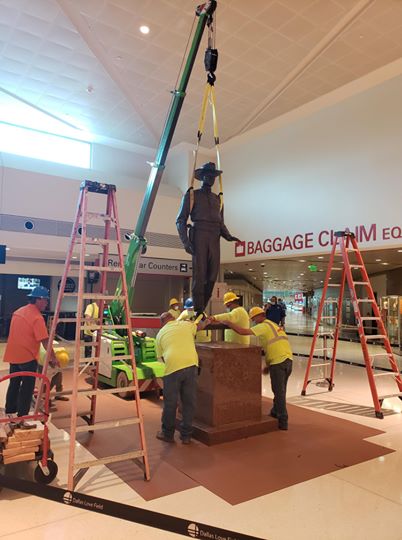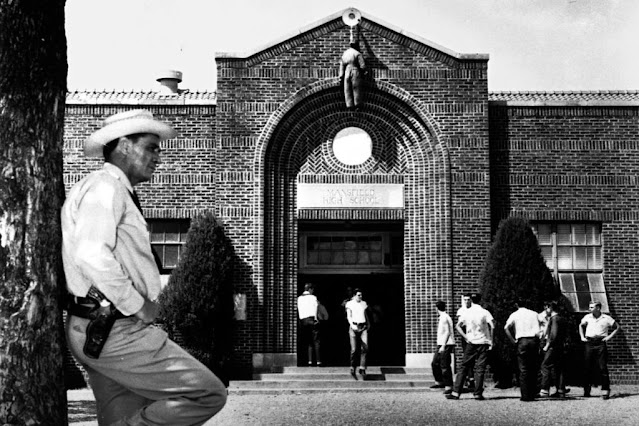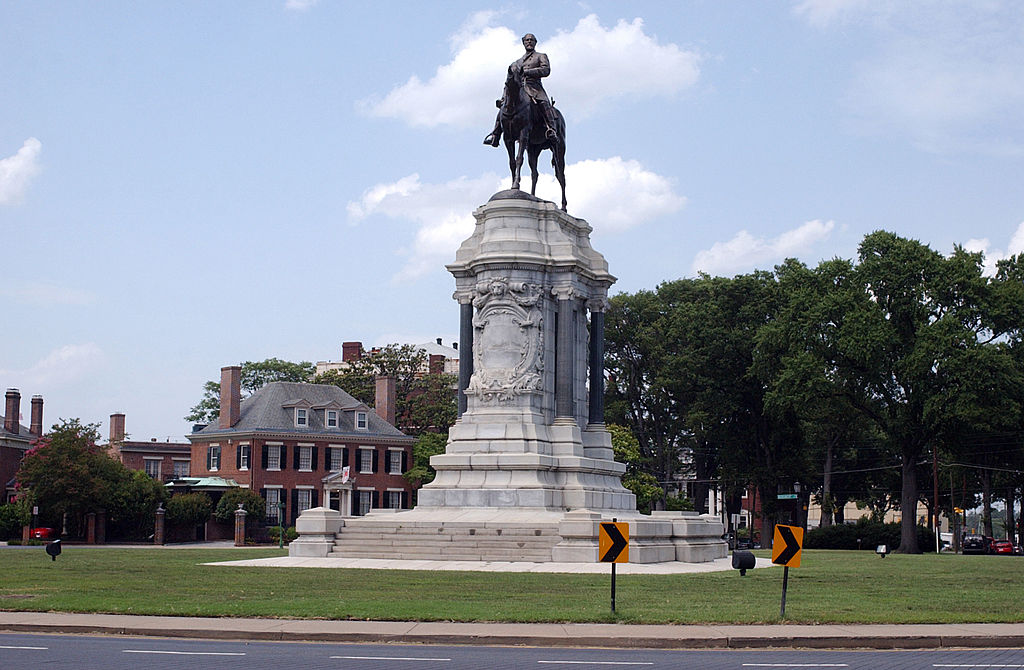"
The people of Texas are informed that, in accordance with a proclamation from the Executive of the United States, 'all slaves are free.'"
June 19, 1865
On September 22, 1862, President Abraham Lincoln issued Proclamation 95, an executive order intended to go into effect on January 1, 1863. The Proclamation would become known as the Emancipation Proclamation, freeing some 3.5 million enslaved African Americans in Confederate states.
Though the proclamation would be mailed and telegraphed across the country, there would be parts of the Confederacy that would refuse manumission, that is, they would refuse to free their enslaved people despite the order. Texas was one such state. The enslaved would not be freed until over two years later, when the Union army reached Galveston. Union Army General Gordon Granger would announce the proclamation above, informing Texas that all enslaved were free.
Though all enslaved African Americans would not be freed until the passing of the 13th Amendment on December 6, 1865, June 19 became a day of celebration in Texas. Juneteenth. Emancipation Day. Jubilee Day. Celebrations started as early as 1866 and spread across the South. Though the celebrations became quiet during Jim Crow and the Civil Rights era, they experienced a resurgence in the 1970s and in many states the day has become a state holiday. There is a push now for the day to be a federal holiday.
If anything, for a large portion of particularly white America, today highlights how badly history has been taught to us. Though Texans of all stripes probably know about Juneteenth, they may not know why it is celebrated or what it celebrates. Many across the country have learned about the holiday for the first time this year.
Many of us have also learned about a lot for the first time this year.
About Emmitt Till.
Or the Tulsa massacre of Black Wall Street, where white rioters tore through the Greenwood district of Tulsa following a misunderstood altercation between a black male shoeshiner and a white female elevator operator. The riots led to the National Guard being called in. Estimates of include up to 300 dead, 800 people admitted to hospitals, 6,000 black residents interned at large facilities for several days. 10,000 black people were left homeless and property damage amounted to more than $1.5 million in real estate.
The Tuskegee Experiments in which African American sharecroppers were used as experiments in order to observe syphilis in African American men. The program started 1932 and involved 600 participants. Of the participants, 399 had latent syphilis. The other 201 were used as a control group. Those with syphilis were not told they had the disease, only that they were being treated for bad blood. They were only given placebos, so that the scientists could explore the full range of effects on syphilis on the patients. The experiments continued until 1972.
About COINTELPRO, the covert and illegal projects conducted by the FBI to discredit political organizations like the Black Power movement, leading to the assassination of Fred Hampton.
About Redlining.
About the Lost Year in Arkansas education, where the governor of Arkansas closed all the white schools following the integration of Little Rock Central High School. With the view that it would be better for white children to get no education that to share the classroom with a Black child.
The police bombing the MOVE house in a residential neighborhood in Philadelphia in 1985.
And so, so much more.
Or even learning about more positive points in history.
Like Madam CJ Walker, the first self-made millionaire in America, an African American woman who ran a successful cosmetic and healthcare company for black women from 1888 to 1919.
Katherine Johnson, whose orbital mechanics calculations were critical to the success of the United States' crewed spaceflights.
Robert Smalls, the first Black American in the United States to hold the title of Captain, in 1863.
Gloria Richardson, who negotiated the Treaty of Cambridge with Attorney General Robert Kennedy.
Claudette Colvin, who at the age of 15 preceded Rosa Parks in giving up her seat on the bus by a few months.
Ralph Bunche, the first African American and the first individual of non-European ethnicity or race to be awarded as a Nobel laureate.
This just scratches the surface. We've segregated history such that we've forgotten that Black history is American history. And to that end, we've done us all a great disservice. Much of what we are seeing today is because a large percentage of the population has no idea about the truth of our past.
Hopefully, today can be the starting point. Use today to educate yourself on the true, complicated history we have in our past. And to educate yourself on the problematic systems that we still have in place today.
A good place to start is the Emancipation Proclamation and the history of emancipation. I've included the full text of the proclamation below and have also linked to an excellent
audible version produced by NPR, where their African American correspondents read the proclamation, as mirror to NPR's tradition of reading the Declaration of Independence on July 4.
One part in particular that has always stood out to me in the celebration of Juneteenth, is its recognition as Jubilee Day. The Jubilee here refers to the Biblical principle of Jubilee, or the Year of Release. From Leviticus 25:8-12 -
“
You shall count seven weeks of years, seven times seven years, so that the time of the seven weeks of years shall give you forty-nine years. Then you shall sound the loud trumpet on the tenth day of the seventh month. On the Day of Atonement you shall sound the trumpet throughout all your land. And you shall consecrate the fiftieth year, and proclaim liberty throughout the land to all its inhabitants. It shall be a jubilee for you, when each of you shall return to his property and each of you shall return to his clan. That fiftieth year shall be a jubilee for you; in it you shall neither sow nor reap what grows of itself nor gather the grapes from the undressed vines. For it is a jubilee. It shall be holy to you. You may eat the produce of the field."
The Jubilee is literally a trumpet blast of freedom, a practice in which every 49th year (or 50th year, depending on how you count) slaves and prisoners would be freed, debts would be forgiven, and the mercies of God would be particularly manifest. It was a year of forgiveness and emancipation. It was also very practical, as it prevented the over accumulation of wealth and arable land in the hands of a few.
African Americans after the Civil War and with the Emancipation Proclamation and 13th Amendment recognized their jubilee.
Perhaps its time for another?
"January 1, 1863
A Transcription
By the President of the United States of America:
A Proclamation.
Whereas, on the twenty-second day of September, in the year of our Lord one thousand eight hundred and sixty-two, a proclamation was issued by the President of the United States, containing, among other things, the following, to wit:
"That on the first day of January, in the year of our Lord one thousand eight hundred and sixty-three, all persons held as slaves within any State or designated part of a State, the people whereof shall then be in rebellion against the United States, shall be then, thenceforward, and forever free; and the Executive Government of the United States, including the military and naval authority thereof, will recognize and maintain the freedom of such persons, and will do no act or acts to repress such persons, or any of them, in any efforts they may make for their actual freedom.
"That the Executive will, on the first day of January aforesaid, by proclamation, designate the States and parts of States, if any, in which the people thereof, respectively, shall then be in rebellion against the United States; and the fact that any State, or the people thereof, shall on that day be, in good faith, represented in the Congress of the United States by members chosen thereto at elections wherein a majority of the qualified voters of such State shall have participated, shall, in the absence of strong countervailing testimony, be deemed conclusive evidence that such State, and the people thereof, are not then in rebellion against the United States."
Now, therefore I, Abraham Lincoln, President of the United States, by virtue of the power in me vested as Commander-in-Chief, of the Army and Navy of the United States in time of actual armed rebellion against the authority and government of the United States, and as a fit and necessary war measure for suppressing said rebellion, do, on this first day of January, in the year of our Lord one thousand eight hundred and sixty-three, and in accordance with my purpose so to do publicly proclaimed for the full period of one hundred days, from the day first above mentioned, order and designate as the States and parts of States wherein the people thereof respectively, are this day in rebellion against the United States, the following, to wit:
Arkansas, Texas, Louisiana, (except the Parishes of St. Bernard, Plaquemines, Jefferson, St. John, St. Charles, St. James Ascension, Assumption, Terrebonne, Lafourche, St. Mary, St. Martin, and Orleans, including the City of New Orleans) Mississippi, Alabama, Florida, Georgia, South Carolina, North Carolina, and Virginia, (except the forty-eight counties designated as West Virginia, and also the counties of Berkley, Accomac, Northampton, Elizabeth City, York, Princess Ann, and Norfolk, including the cities of Norfolk and Portsmouth[)], and which excepted parts, are for the present, left precisely as if this proclamation were not issued.
And by virtue of the power, and for the purpose aforesaid, I do order and declare that all persons held as slaves within said designated States, and parts of States, are, and henceforward shall be free; and that the Executive government of the United States, including the military and naval authorities thereof, will recognize and maintain the freedom of said persons.
And I hereby enjoin upon the people so declared to be free to abstain from all violence, unless in necessary self-defence; and I recommend to them that, in all cases when allowed, they labor faithfully for reasonable wages.
And I further declare and make known, that such persons of suitable condition, will be received into the armed service of the United States to garrison forts, positions, stations, and other places, and to man vessels of all sorts in said service.
And upon this act, sincerely believed to be an act of justice, warranted by the Constitution, upon military necessity, I invoke the considerate judgment of mankind, and the gracious favor of Almighty God.
In witness whereof, I have hereunto set my hand and caused the seal of the United States to be affixed.
Done at the City of Washington, this first day of January, in the year of our Lord one thousand eight hundred and sixty three, and of the Independence of the United States of America the eighty-seventh.
By the President: ABRAHAM LINCOLN
WILLIAM H. SEWARD, Secretary of State."
























